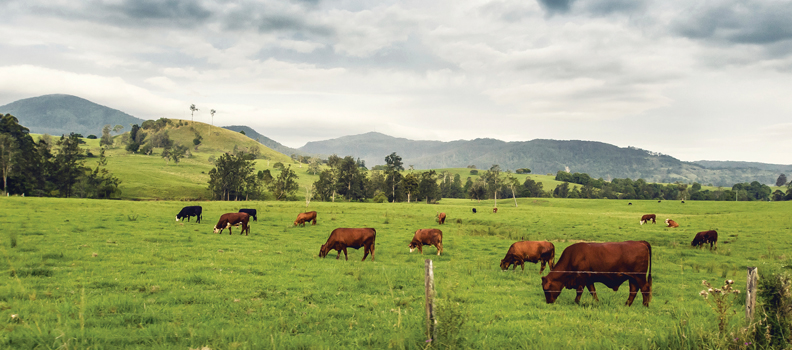Combating Grass Tetany (Hypomagnesemia)

Many livestock producers face animal health issues associated with trace element deficiencies. One of the most common issues we hear about is low magnesium, resulting in grass tetany.
What is Grass Tetany?
Grass tetany comes in two forms. The simple form is a magnesium deficiency in the diet. The complex form occurs when other elements such as potassium interfere with the uptake of magnesium. You can also see grass tetany take hold when your animal has low calcium levels in the blood, usually in the late stages of pregnancy.
Bos taurus (Angus, Holstein, Hereford Charolais, etc.) breeds are more susceptible to grass tetany than Bos indicus (Brahman, Santa Gertrudis) breeds. Sheep can also get grass tetany in the form most commonly known as ‘grass staggers’.
When are my Animals Most Likely to Develop Grass Tetany?
Grass Tetany usually occurs with the first green pick of the season, when the pasture is often short and grass dominant and very low in magnesium. These conditions, when combined with climatic stress such as cold weather, rain and wind, impact the onset of grass tetany. Grass tetany is especially prevalent in cold weather when many cows are in mid-lactation and losing condition.
What are the Signs of Grass Tetany?
Often the first sign that an animal is suffering from grass tetany is finding them dead in the paddock. They will usually be laying on their side and have marks present on the ground indicating leg paddling (thrashing their legs around) prior to death. Leading up to this, you may notice animals in your herd that are nervous and have muscle twitching, or they may seem very agitated and have a stiff gait. Some animals appear aggressive and begin to gallop and bellow. Other signs that could indicate progressed grass tetany include froth coming from their mouth and nose.
How can I Treat Grass Tetany?
Magnesium is an essential element needed for the development and maintenance of the nervous system. Having low levels of magnesium also results in the depreciation of muscle function and ultimately, if not treated, death.
Prevention is the key! Beachport Liquid Minerals has a product called BLM High Magnesium, which has been specifically formulated to use as a tool in your grass tetany prevention plan.
BLM High Magnesium (or Yellow Cap) has 20% higher magnesium than our normal BLM range, plus all the trace elements, amino acids and electrolytes that are in our other BLM products.
Remember, this is NOT a cure by any means. It’s another preventative tool to help in the fight against grass tetany. You can use it in conjunction with other grass tetany preventative tools, such as the usage of Magnesium Oxide or blocks. The BLM High Magnesium product will help improve the absorption of the blocks or licks; the animals are able to utilise them better. We also recommend feeding good quality hay to help provide roughage.
As cattle can store only very small amounts of magnesium, it’s important to keep their magnesium levels up as much as possible. The recommended dose rate is 25ml (for cattle weighing 400kg+) every three weeks to keep the magnesium levels elevated. You can use BLM High Magnesium with the dispenser like all the products in our Beachport range.
John Andre from ‘Ceres’ in Southern Australia uses our product all year round and uses the High Magnesium mix for the period from May to August when grass tetany is most prevalent in the South East of SA. Blood tests have proved the magnesium levels to be very satisfactory.
Written by Jacqui Mathys
